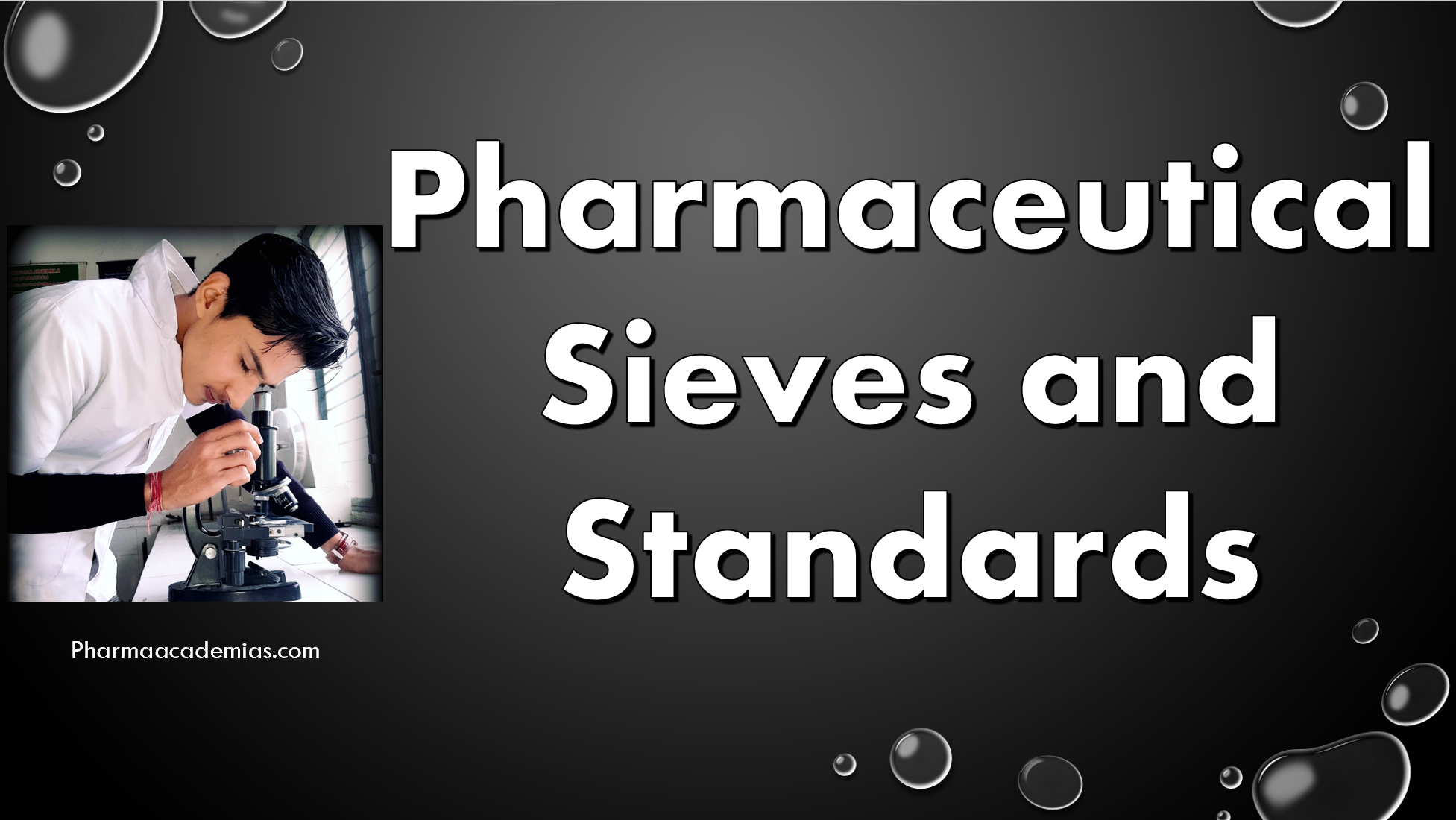Pharmaceutical sieves are essential tools in the pharmaceutical industry, used to separate and classify pharmaceutical materials based on particle size. These sieves are crucial in quality control, formulation development, and pharmaceutical manufacturing. Here’s a detailed note on pharmaceutical sieves and the standards that govern their use:
Pharmaceutical Sieves

Pharmaceutical sieves are precision instruments for performing the sieving or particle size analysis of pharmaceutical materials, including active pharmaceutical ingredients (APIs), excipients, and finished dosage forms. Manufacturers typically make them from high-quality materials like stainless steel or brass to meet stringent regulatory and quality standards. The sieves consist of a mesh or perforated surface stretched over a frame, and they are available in various sizes, types, and mesh configurations to accommodate different pharmaceutical applications.
Key Functions of Pharmaceutical Sieves
1. Particle Size Analysis: Pharmaceutical sieves are used to determine the particle size distribution of powders and granules, which is essential for product quality and performance.
2. Quality Control: Sieving is a critical step in quality control to ensure that pharmaceutical materials meet specified particle size specifications.
3. Formulation Development: Sieve analysis helps pharmaceutical formulators choose appropriate particle size ranges for API and excipient selection.
4. Uniformity Testing: In drug formulation, sieves assess the uniformity of blends and mixtures, such as tablet or capsule formulations.
Standards of Sieves
Pharmaceutical sieves must adhere to specific standards to ensure accuracy, consistency, and reliability. Some key standards governing pharmaceutical sieves include:
1. ASTM E11 (American Society for Testing and Materials): This standard provides guidelines for the design, construction, and testing of woven wire test sieves used for particle size analysis in various industries, including pharmaceuticals.
2. USP (United States Pharmacopeia): The USP has standards and general chapters related to sieve testing for pharmaceuticals. It outlines procedures and requirements for testing and validating sieves used in the pharmaceutical industry.
3. EP (European Pharmacopoeia): The EP includes specific monographs and guidelines for the use and calibration of sieves in pharmaceutical applications.
4. ISO 3310-1 (International Organization for Standardization): This ISO standard specifies test sieves in terms of dimensions, perforations, and tolerances. It is commonly referenced in pharmaceutical sieve standards.
Validation and Calibration
Pharmaceutical sieves need to be regularly validated and calibrated to ensure their accuracy and compliance with the specified standards. Validation involves verifying that the sieve consistently provides accurate results for a particular pharmaceutical material. Calibration ensures that the sieve mesh or perforations meet the required specifications.
Sieve Certification: Many sieve manufacturers offer sieve certification documents that indicate the sieve’s compliance with relevant standards and its calibration and validation.

